sx blog
Our digital space for brief commentary and reflection on cultural, political, and intellectual events. We feature supplementary materials that enhance the content of our multiple platforms.
sx salon: New Books Available for Review!
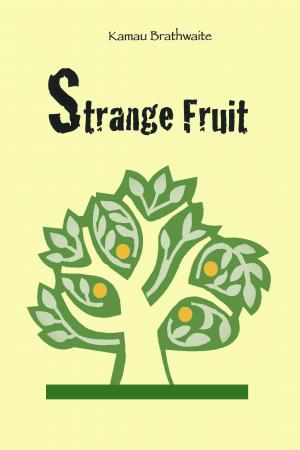
NEW BOOKS ALERT!! New books for review on sx salon for March 2017!! If you have a moment, take a look!!
Note: We offer the following partial list in order to highlight newly published books in Caribbean Literature and Caribbean Studies. If you have any questions about sx salon book reviews, please contact our book review editor Vanessa K. Valdés (vkv@smallaxe.net)
Featured Book
Strange Fruit, by Kamau Brathwaite (2016)
Fiction
Dance on the Volcano, by Marie Vieux-Chauvet, trans. Kaiama L. Glover (1957/2017)
Here Comes the Sun, by Nicole Dennis-Benn (2016)
San Juan Noir, ed. by Mayra Santos-Febres (2016)
New Worlds, Old Ways: Speculative Tales from the Caribbean, ed. by Karen Lord (2016)
Gone to Drift, by Diana McCauley (2016)
Le miroir d’Anabelle et autres récits, by Lyonel Trouillot (2016)
The Marvelous Equations of the Dread: a novel in bass riddim, by Marcia Douglas (2016)
The Bone Readers, by Jacob Ross (2016)
The Orchid House, by Phyllis Shand Allfrey (1953/2016)
The Angels’ Share, by Garfield Ellis (2016)
Tracing Jaja, by Anthony Kellman (2016)
J--, Black Bam and the Masqueraders, by Garth St. Omer (2016)
Poetry
Kumina Queen, by Monica Minott (2016)
Absolute Solitude, by Dulce María Loynaz, trans. By James O’Connor (1953/2016)
Fossil, by Maya Chowdhry (2016)
Kingston Buttercup, by Ann-Margaret Lim (2016)
Cannibal, by Safiya Sinclair (2016)
Only the Road / Solo el camino: Eight Decades of Cuban Poetry, ed. by Margaret Randall
Speak from Here to There, by Kwame Dawes and John Kinsella (2016)
Book of the Dead, by Lasana M. Sekou (2016)
Measures of Expatriation, by Vahni Capildeo (2016)
Vivas to Those Who Have Failed, by Martín Espada (2016)
Non-Fiction
Creole in the Archive: Imagery, Presence and the Location of the Caribbean Figure, by Roshini Kempadoo (2016)
The Great Woman Singer: Gender and Voice in Puerto Rican Music, by Licia Fiol-Matta (2016)
We Dream Together: Dominican Independence, Haiti, and the Fight for Caribbean Freedom, by Anne Eller (2016)
The Borders of Dominicanidad: Race, Nation, and Archives of Contradiction, by Lorgia García-Peña (2016)
Isles of Noise: Sonic Media in the Caribbean, by Alejandra Bronfman (2016)
The Black Jacobins Reader, ed. by Charles Forsdick and Christian Høgsbjerg
Island People: The Caribbean and the World, by Joshua Jelly-Schapiro (2016)
The Caribbean Oral Tradition: Literature, Performance, and Practice, ed. by Hanétha Vété-Congolo (2016)
Dangerous Creole Liaisons: Sexuality and Nationalism in French Caribbean Discourses from 1806 to 1897, by Jacqueline Couti (2016)
White Innocence: paradoxes of Colonialism and Race, by Gloria D. Wekker (2016)
Documenting the Undocumented: Latino/a Narratives and Social Justice in the Era of Operation Gatekeeper, by Marta Caminero-Santangelo (2016)
The Colour of Shadows: Images of Caribbean Slavery, by Judy Raymond (2016)
Gendered Geographies in Puerto Rican Culture: Spaces, Sexualities, Solidarities, by Radost Rangelova (2016)
Junot Díaz and the Decolonial Imaginary, ed. by Monica Hanna, Jennifer Harford Vargas, and José David Saldívar (2016)
She is Cuba: A Genealogy of the Mulata Body, by Melissa Blanco Borelli (2016)
Calypso Magnolia: The Crosscurrents of Caribbean and Southern Literature, by John Wharton Lowe (2016)
Léon-Gontran Damas: Une Négritude entière, ed. by Hanétha Vété-Congolo (2016)
Small Axe Literary Competition l Prix Littéraire Small Axe l Premio Literario Small Axe

Now accepting submissions in Spanish
Small Axe Announces its 2017 Literary Competition
The Small Axe Literary Competition encourages the production and publication of Caribbean fiction and poetry in English, Spanish and French. The competition focuses on poetry and short fiction from emerging writers whose work centers on regional and diasporic Caribbean themes and concerns. This competition is part of the Small Axe Project's ongoing commitment to Caribbean cultural production and our mission to provide a forum for innovative critical and creative explorations of Caribbean reality. With this competition, we hope to encourage and support the region's rich literary heritage, in the tradition of precursors such as Bim (Barbados, 1942), Kyk-over-al (Guyana, 1945), Tropiques (Martinique, 1941), Focus (Jamaica, 1940), Orígenes (Cuba, 1944), La poesía sorprendida (Dominican Republic, 1944), Revista del Instituto de Cultura Puertorriqueña (Puerto Rico, 1945), Conjonction (Haiti, 1946), Revista Casa (Cuba, 1960), and Savacou (Jamaica, 1970).
The Small Axe Literary Competition consists of two categories: poetry and short fiction. First and second prizes are chosen from each category by a distinguished panel of judges. In 2017, the Small Axe Literary Competition will enter an important new phase, and for the first time invite entries in Spanish, English, and French. Beginning this year with Spanish we will accept submissions in each of the three languages in a three-year rotation.
First Prize: $750; Second Prize: $500
2017 competition submission deadline: 30 May 2017
Winners will be announced in October and will be published in Small Axe 56, July 2018
Writers wishing to compete for a Small Axe Literary Prize must submit the following to litcomp@smallaxe.net:
- A double-spaced Word document containing: an original, unpublished short story (maximum 7,000 words), or an original selection of unpublished poetry (maximum ten poems, not exceeding ten manuscript pages).
- Submissions should not currently be under review for publication elsewhere and should remain unpublished throughout the duration of the competition.
- All submissions should be in 12pt font, Times New Roman, numbered consecutively in the bottom right hand corner, with no other information in the header or footer. Manuscripts must be free of any author information. No PDFs
- A separate document with full contact information (name, email address, mailing address, and phone) and a biography (not exceeding 250 words), including previously published works should be included with the manuscript email submission.
- As a competition for emerging writers, entrants should not have published a book in the category for which they are competing. If a writer has published chapbooks and/or self-published, they are still eligible.
Small Axe Convoca para el año 2017 su Premio Literario
El concurso literario de Small Axe tiene como objetivo animar la producción y publicación de cuentos y poesía caribeña en inglés, español y francés. El concurso se centra en escritores emergentes cuyo trabajo trata temas y preocupaciones regionales y de la diáspora caribeña. Este concurso forma parte del compromiso continuo del proyecto de Small Axe con la producción cultural caribeña y nuestra misión de proveer un foro para la exploración crítica, creativa e innovadora de la realidad caribeña. Con este concurso, esperamos estimular, difundir y apoyar la rica herencia literaria de la región, en la tradición de precursores como Bim (Barbados, 1942), Kyk-over-al (Guyana, 1945), Tropiques (Martinica, 1941), Focus (Jamaica, 1940), Orígenes (Cuba, 1944), La poesía sorprendida (República Dominicana, 1944), Revista del Instituto de Cultura Puertorriqueña (Puerto Rico, 1945), Revista Casa (Cuba, 1960) y Savacou (Jamaica, 1970).
El concurso literario de Small Axe consta de dos géneros y categorías: poesía y cuento. Un distinguido jurado elegirá el primer y segundo premio para ambas categorías. En el 2017, el concurso literario de Small Axe entra en una nueva fase en la cual invitamos a los autores y autoras a que nos envíen obras en español, francés e inglés.
Primer Premio: $ 750; Segundo Premio: $ 500
La fecha límite de envío de obras para el concurso del 2017: el 30 de mayo de 2017
Las obras ganadoras serán anunciadas en octubre y se publicarán en Small Axe 56, julio 2018
Los autores y obras concursantes para el premio literario de Small Axe deberán regirse por lo siguiente y remitir los documentos a litcomp@smallaxe.net.
- Un documento Word a espacio doble que contenga: un cuento original inédito (la obra no puede exceder las 7,000 palabras), o una selección original de poesía inédita (un máximo de diez poemas y diez páginas).
- Ningún autor podrá participar con una obra en proceso de publicación, aunque esté inédita.
- Todos los ejemplares deben seguir el siguiente formato: Times New Roman, tamaño 12 puntos, con las páginas numeradas consecutivamente en la esquina inferior derecha, sin ninguna información en el encabezado o pie de página. Los manuscritos tampoco deben incluir información sobre el autor. No se aceptan obras en formato PDF.
- Se debe incluir un documento aparte con información de contacto del autor (nombre, dirección de correo electrónico, dirección postal y número de teléfono) y una biografía (que no exceda de 250 palabras e incluya las publicaciones del autor).
- Como éste es un concurso para escritores emergentes, los participantes no deberán haber publicado un libro en la categoría concursante. En el caso de haber publicado chapbooks, el escritor aún podrá concursar.
Small Axe Annonce pour l'année 2017 son Prix Litteraire
Le concours littéraire Small Axe encourage la production et la publication de fiction et poésie caribéennes en anglais, espagnol et français. Ce concours se destine aux auteurs en début de carrière dont les nouvelles ou poèmes traitent de thématiques et problématiques caribéennes régionales et diasporiques. Il s’inscrit dans la continuité de l’engagement du Projet Small Axe vis-à-vis de la production culturelle caribéenne, ainsi que dans notre mission : offrir un lieu d’explorations critiques et créatives de la réalité caribéenne dont l’angle est novateur. À travers ce concours, nous espérons encourager et soutenir le riche patrimoine littéraire de cette région dans la tradition de revues littéraires telles que Bim (Barbade, 1942), Kyk-over-al (Guyane, 1945), Tropiques (Martinique, 1941), Focus (Jamaïque, 1940), Orígenes (Cuba, 1944), La poesía sorprendida (République dominicaine, 1944), Revista del Instituto de Cultura Puertorriqueña (Porto Rico, 1945), Conjonction (Haïti, 1946), Revista Casa (Cuba, 1960) et Savacou (Jamaïque, 1970).
Le concours littéraire Small Axe comprend deux catégories : poésie et nouvelles. Dans chaque catégorie, un premier et un second prix seront décernés par un jury constitué d’écrivains de renom. Nous acceptons les écrits rédigés en espagnol, français et anglais. Nous acceptons les écrits en on langues chaque année par rotation de trois années. À partir de cette année avec l'espagnol, nous accepterons les soumissions dans chacune des trois langues dans une rotation de trois ans.
Premier prix: $750; second prix: $500
Date limite d’envoi pour le concours 2017 : 30 mai 2017
Les noms des lauréats seront annoncés en octobre et les écrits récompensés au concours de 2017 seront publiés dans le numéro Small Axe 56, juillet 2018
Les auteurs souhaitant concourir pour un prix littéraire Small Axe sont invités à envoyer les éléments suivants à l’adresse litcomp@smallaxe.net :
- Un document Word à double interligne contenant une nouvelle originale et inédite d’un maximum de 7 000 mots, ou un maximum de dix poèmes originaux et inédits (dont la longueur totale ne dépasse pas dix pages).
- Un document à part contenant des coordonnées complètes (nom, adresse électronique, adresse postale et numéro de téléphone) et une biographie d’un maximum de 250 mots qui mentionne les œuvres publiées précédemment.
- Les manuscrits doivent être rédigés en police 12pt, Times New Roman, numérotés consécutivement dans le coin inférieur droit, sans en-tête ni titre en bas de page. Ils ne doivent comporter aucune information qui en identifie l’auteur. Pas de documents PDF.
- Les œuvres soumises ne doivent pas être en cours de relecture en vue d’une publication, et ne doivent pas être publiées avant l’issue du concours.
- Puisqu’il s’agit d’un concours destiné aux auteurs en début de carrière, les participants ne peuvent pas concourir dans la catégorie poésie s’ils ont déjà publié un poème ou dans la catégorie nouvelles s’ils ont déjà publié une nouvelle. Les écrivains ayant publié des chapbooks et / ou publié des œuvres à compte d’auteur sont tout de même éligibles.
Contact:
Vanessa Pérez-Rosario, managing editor, Small Axe
Martin Munro, editorial committee, Small Axe
co-sponsored by the Winthrop-King Institute for Contemporary French and Francophone Studies
CFP: Commemorating 1917: A Discussion of Citizenship and Freedom in Caribbean Literature
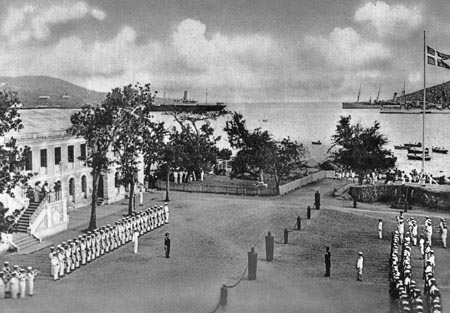
Call for Papers:
Commemorating 1917: A Discussion of Citizenship and Freedom in Caribbean Literature
Proposals for this special section are due by 1 June 2017 and full discussion articles will be due by 31 August 2017. Please send proposals to Vanessa K Váldes at vkv@smallaxe.net.
1917 was a significant year in the Caribbean:
- On March 2, 1917, the Jones‑Shafroth Act was signed, conferring U.S. citizenship to inhabitants of Puerto Rico, the territory it had annexed at the conclusion of the Spanish-Cuban-American War of 1898.
- Twenty-nine days later, on March 31, 1917, the Danish West Indies formally became the Virgin Islands of the United States, as the United States had purchased the islands of St. Croix, St. Thomas, and St. John for twenty‑five million dollars from Denmark. (The inhabitants of these islands would be granted citizenship a decade later.)
- 1917 marked the third year of a U.S. military occupation in Haiti that would last for seventeen years: during the first months of the year, the Haitian legislature rejected a version of the constitution drafted by the U. S. State Department which included a provision that allowed for foreign ownership of land, a feature that had been excluded in previous constitutions.
- In the Dominican Republic, 1917 marked the first year of a war of resistance against the U.S. military occupation happening in that country; this guerrilla war would last five years.
- Finally, the year would see the end of Indian indentured labor in the British Empire, including the colonies of Guyana, Trinidad, and Jamaica.
In commemoration of the centennial of these events, sx salon: a small axe literary platform seeks discussion essays that examine how these historical moments are reflected in the region’s literature, then and/or now. How did literary writers of the time respond? Given the ongoing legacies of these occurrences, how have writers of later generations interpreted this critical year in the region?
This special section on the centennial of 1917 is slated for publication in October 2017. Discussion articles are typically 2000-2500 words and offer a targeted exploration of the topic. sx salon, launched in 2010 as part of the Small Axe Project, is an electronic publication dedicated to literary discussions, interviews with Caribbean literary figures, reviews of new publications (creative and scholarly) related to the Caribbean, and short fiction and poetry by emerging and established Caribbean writers. View past issues and submissions guidelines here.
Proposals for this special section are due by 1 June 2017 and full discussion articles will be due by 31 August 2017. Please send proposals to Vanessa K Váldes at vkv@smallaxe.net.
(St. Thomas Harbor, March 31, 1917 – View from the fort before the Danish Flag came down. Photo by
H. Petersen, courtesy of NPS-HFC)
Caribbean Queer Visualities, Glasgow
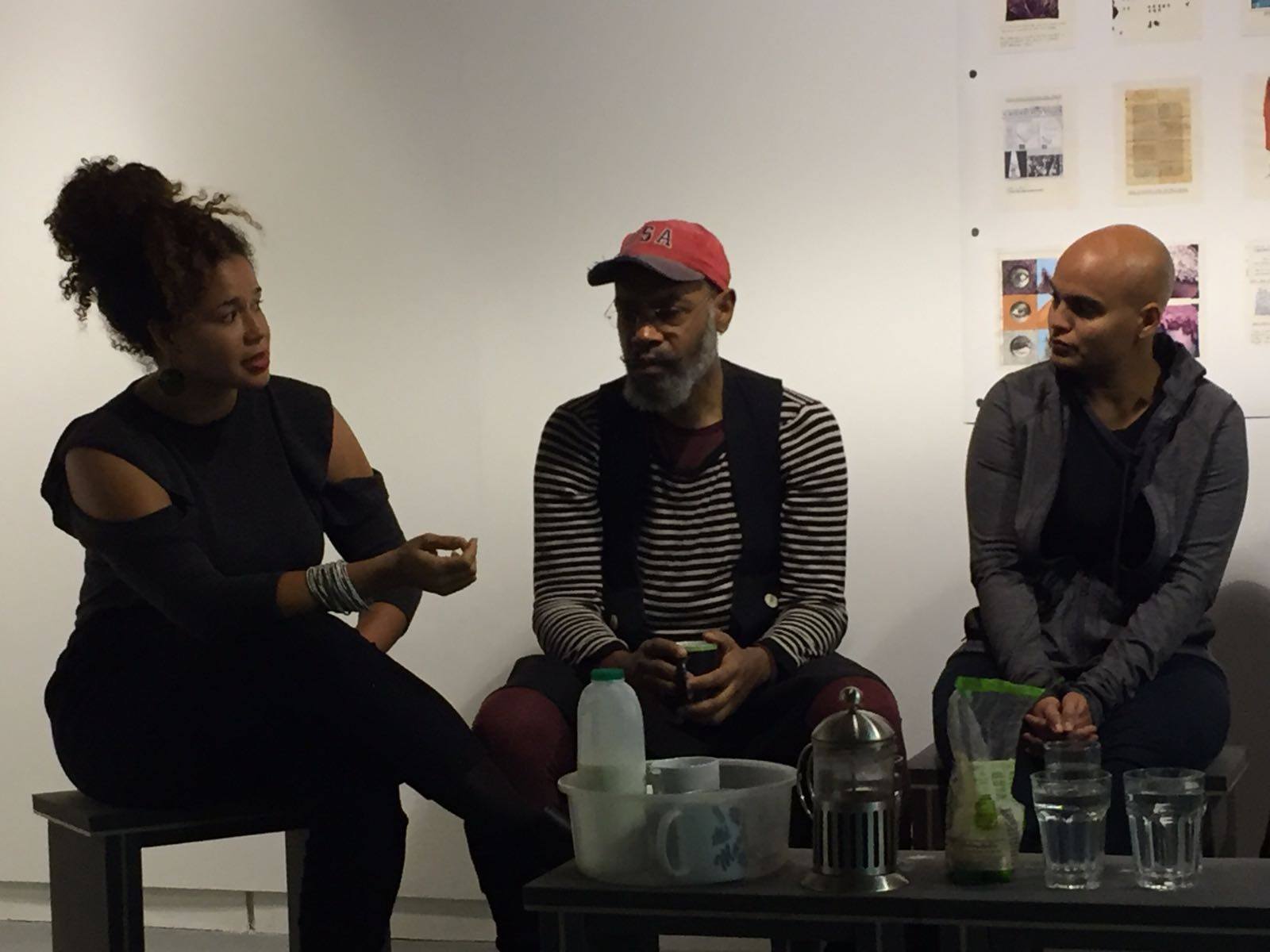
On Sunday afternoon, February 19th, Transmission Gallery in Glasgow hosted a public conversation between three artists participating in the exhibition 'Caribbean Queer Visualities'; Jean-Ulrick Désert, Nadia Huggins and Kareem Mortimer and exhibition co-curator and Small Axe Project director, David Scott. The conversation was moderated by Alberta Whittle.

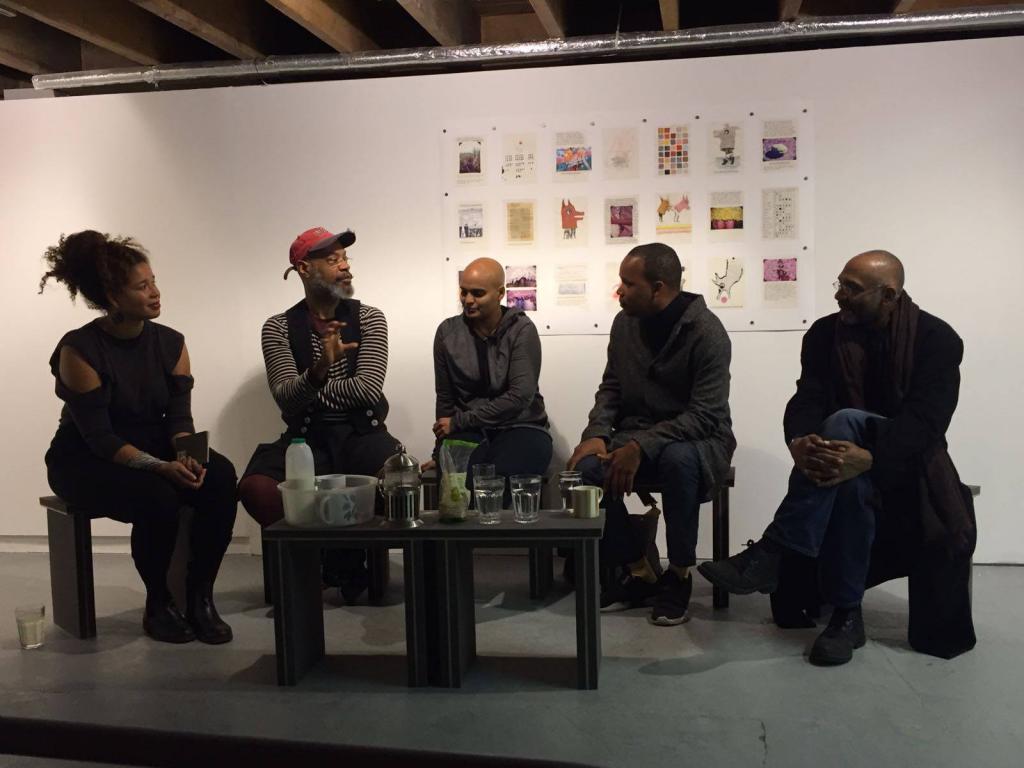
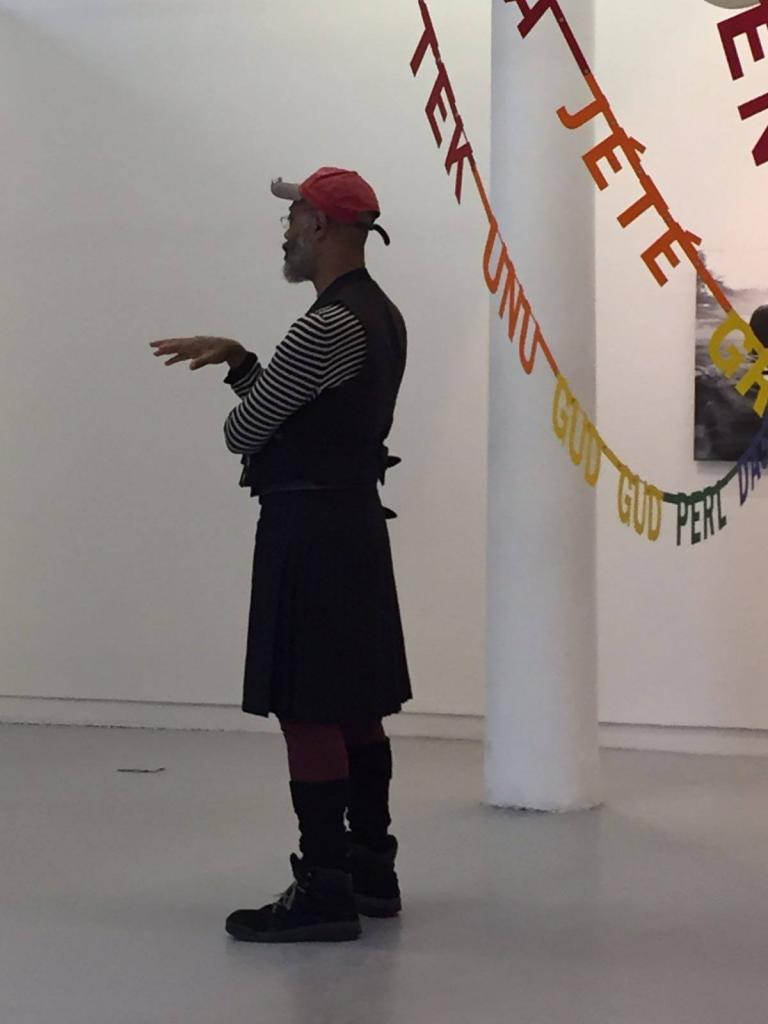
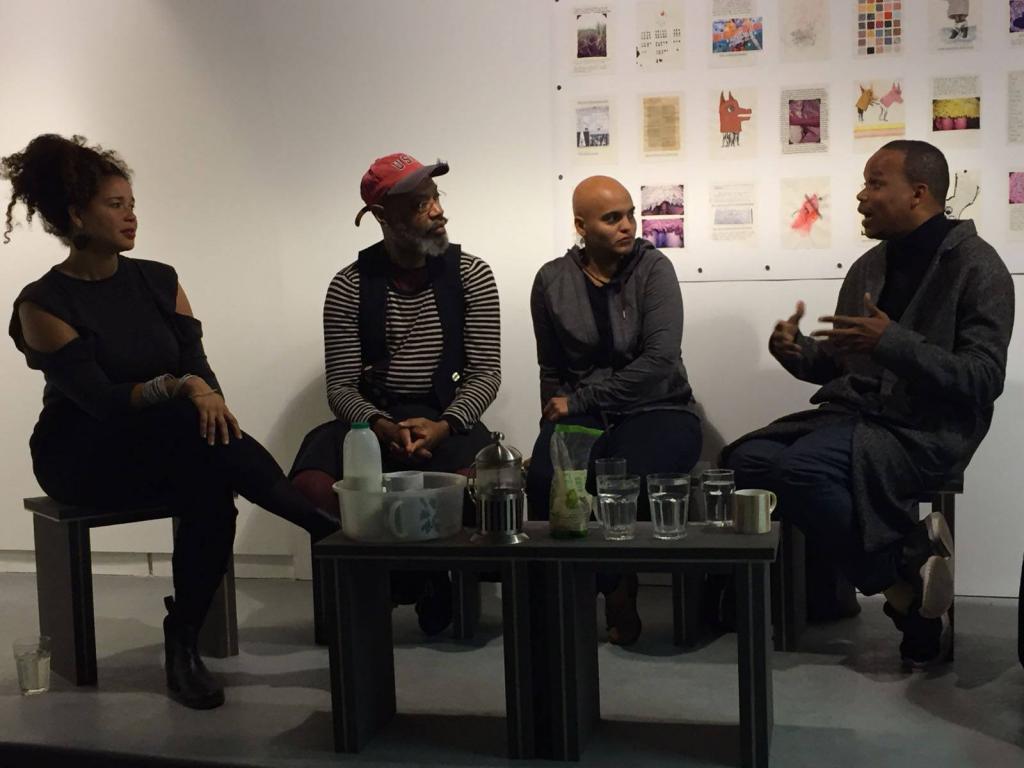
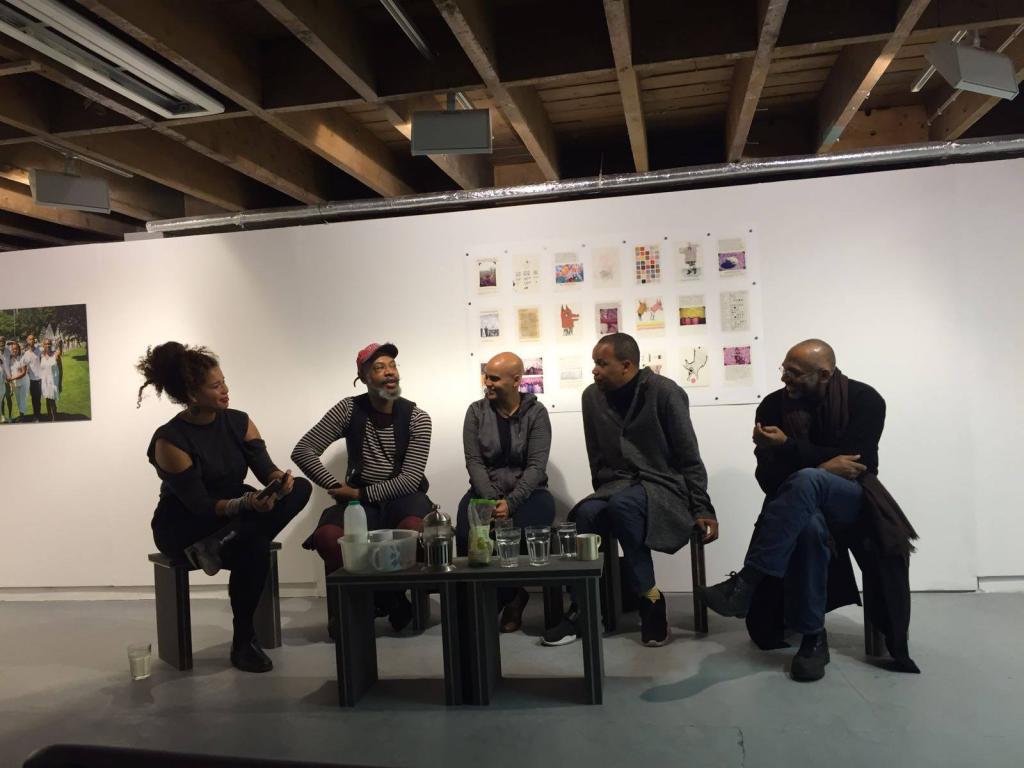
Caribbean Queer Visualities is a Small Axe Project and the Glasgow exhibition is in partnership with Transmission Gallery and the British Council Caribbean. #CQVGlasgow
sx archipelagos Seeks Digital Scholarship for May 2017 Issue
sx archipelagos, the most recent born-digital publishing platform of the Small Axe Project, seeks mid-stage digital scholarship for peer review and public launch. We invite Caribbean-focused digital humanities projects currently under development to participate in our unique single-blind evaluation process and to be included as featured content in the journal's May 2017 issue. Please see our inaugural issue (May 2016) - especially our review of Laurent Dubois, David Garner, and Mary Caton Lingold's Musical Passage - and our submission guidelines for further information.
350-500 word abstracts are requested no later than Monday, 6 March to Kaiama L. Glover and Alex Gil: archipelagos@smallaxe.net.